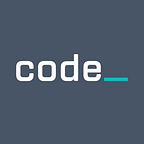Spotlight Story: Interns and Open Source: A Productive Combination
This is a guest post by Ian Lee, a computer engineer and student mentor who is committed to improving Lawrence Livermore National Laboratory’s engagement with the open source software community.
Software underpins much of the scientific discovery happening at Lawrence Livermore National Laboratory (LLNL), and open source has been part of our computing culture for a long time. Like many organizations during the COVID-19 pandemic, the Lab quickly adapted to telework and welcomed hundreds of undergraduate and graduate students into virtual internships.
Our open source community was already primed for student participation. Open source software (OSS) by definition is freely accessible by users and developers from any organization or location. LLNL manages more than 650 software repositories on the GitHub hosting platform, where we’re accustomed to interacting with remote collaborators. This provides a natural, convenient setting for remote interning and mentoring. Students just need a GitHub account to begin contributing.
The partnership between interns and OSS project teams is a win–win. Students gain job experience, expand their professional network, build a programming portfolio and new skills, and get a taste for working at a national lab. Project teams often delegate specific features or “someday when we have time” tasks to interns and in many cases evaluate students for potential post-graduation job offers.
This summer, interns contributed to a range of OSS projects, including a visualization and analysis tool for high performance computing (HPC) simulations and a high-order math library that performs the calculations for such simulations. An intern even upgraded our OSS portal — which catalogs our GitHub repositories along with news and software policies, and is itself open source — with visualizations that provide insight into the characteristics of, and relationships between, LLNL’s open source projects.
With this cycle of internships wrapping up, both students and mentors report a lot of productivity despite the challenges of not meeting in person. Tools like Slack and WebEx have helped ease that particular burden, and students were able to get up and running faster by using their own laptops. Instead of the traditional in-person student poster symposium, the Lab held online “Summer Slam” sessions where interns presented their projects to a review panel via WebEx.
Regardless of format, LLNL will host interns next summer, and we in the open source community look forward to their contributions and perspectives.
This work was performed under the auspices of the U.S. Department of Energy by Lawrence Livermore National Laboratory under Contract DE-AC52–07NA27344. LLNL-WEB-815058
